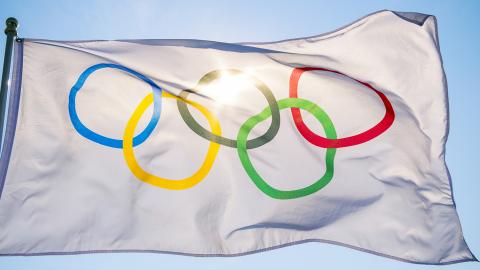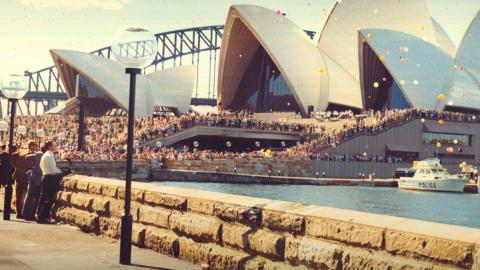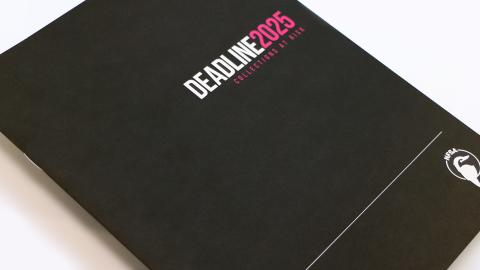
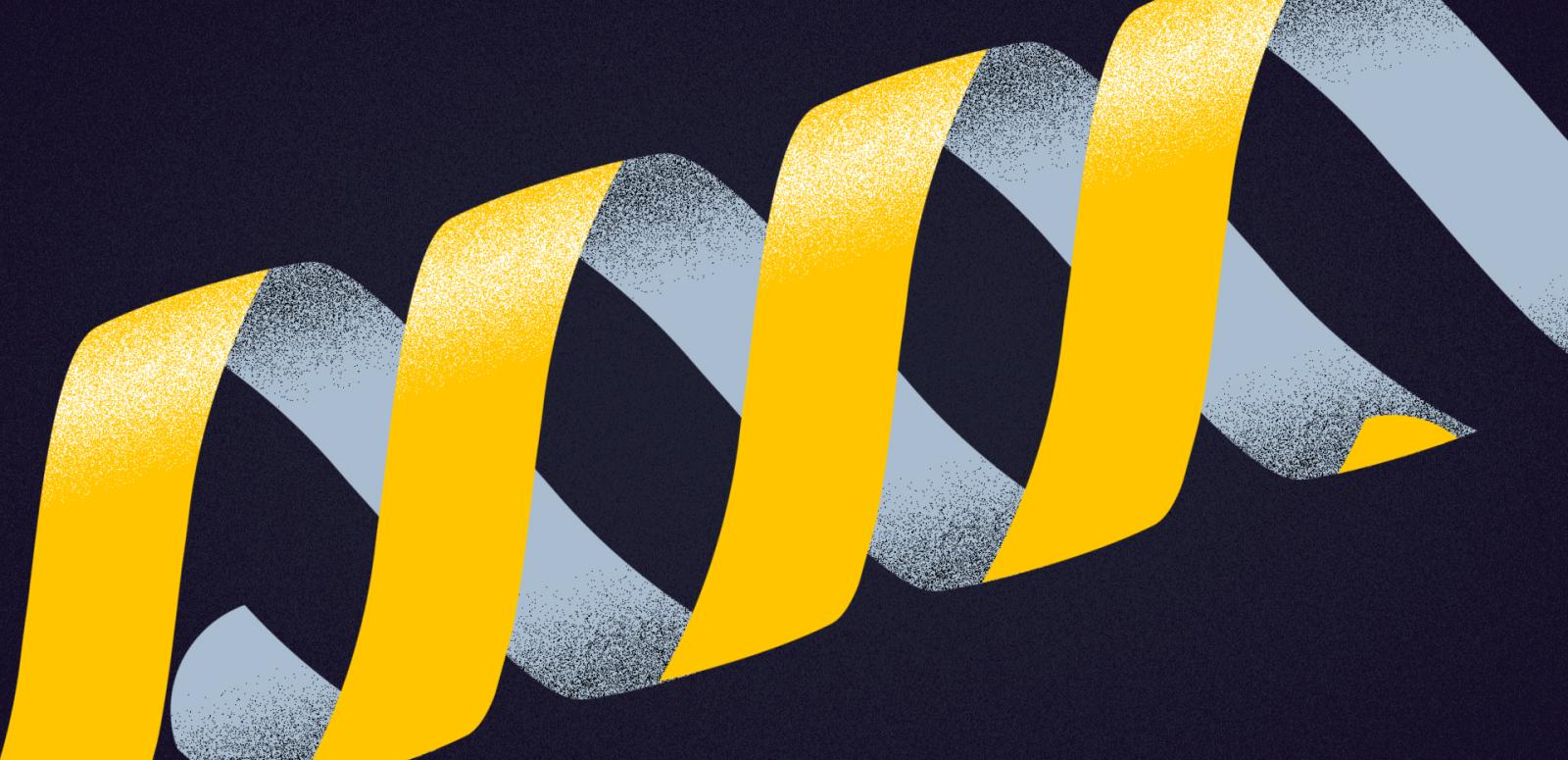
NFSA + DNA
NFSA + DNA
NFSA + DNA
Where were you on 25 September 2000, when Cathy Freeman won the gold medal in the Women’s 400 metre final at the Sydney Olympic Games?
For 49.11 seconds, Australians held their breaths and then erupted in celebration as they witnessed history in the making, with Freeman becoming the first Aboriginal person to win Olympic gold in an individual event.
On the 20th anniversary of the historic race, the NFSA has also made history by preserving the footage of Freeman’s race on synthetic DNA. This is the first ever use of this innovative data storage technology to preserve moving image for long-term archival purposes. An iconic moment which has metaphorically become part of Australia’s DNA, is now stored on actual DNA.
Working in partnership with the Olympic Foundation for Culture and Heritage (OFCH), the NFSA has ensured that Freeman’s victory will be preserved for thousands of years in a tiny vial, with minimal environmental impact.
The following mini-documentary provides an overview of this groundbreaking project:
NFSA + DNA: Preserving Cathy Freeman's Olympic win, 25 September 2020.
On the night of 25 September 2020, we teamed up with the Australian Olympic Committee to celebrate both the preservation of this historic video on DNA and the anniversary of Freeman’s race, with a special projection of the footage on the sails of Australia’s most famous building – the Sydney Opera House:
Lighting the sails of the Sydney Opera House with Olympic gold. © 2020 Images of Cathy Freeman and Olympic Games All rights reserved by International Olympic Committee. This footage shall only be used for personal/non-commercial purposes.
The Future of Data Storage
Did you know that the world is producing more data than we'll be able to store in the near future? In addition to this data challenge, audiovisual archives also face rapid technological obsolescence. From videotapes to digital files, all formats we collect become obsolete, so we must constantly transfer our collection to new technologies to ensure their survival and accessibility.
The NFSA is always exploring new solutions that will allow us to store and manage our massive digital collection in the most efficient, reliable, scalable, economically viable and environmentally responsible manner. This is why we are investing in the future of data storage and management by testing an innovative, sustainable, long-term data storage technology: synthetic DNA.
Not unlike the dinosaur cloning explanation scene in Jurassic Park, you may be wondering how this synthetic DNA works. While digital information is stored using a series of zeroes and ones, DNA information is based on four nucleotide bases: adenine (A), thymine (T), guanine (G) and cytosine (C). The order/sequence of these determines the information stored in a DNA strand. In order to encode digital data such as video or audio on DNA, the zeroes and ones are converted into A, T, G and Cs. The sequence is then stored on silicon-based synthetic DNA.
Synthetic DNA offers great information storage density. Theoretically, the entire NFSA collection could fit six times over in synthetic DNA the size of a matchstick! In the meantime, the DNA copy of Cathy Freeman's race will be stored in a vial the size of a AAA battery, which can be put on a shelf for thousands of years without ongoing maintenance.
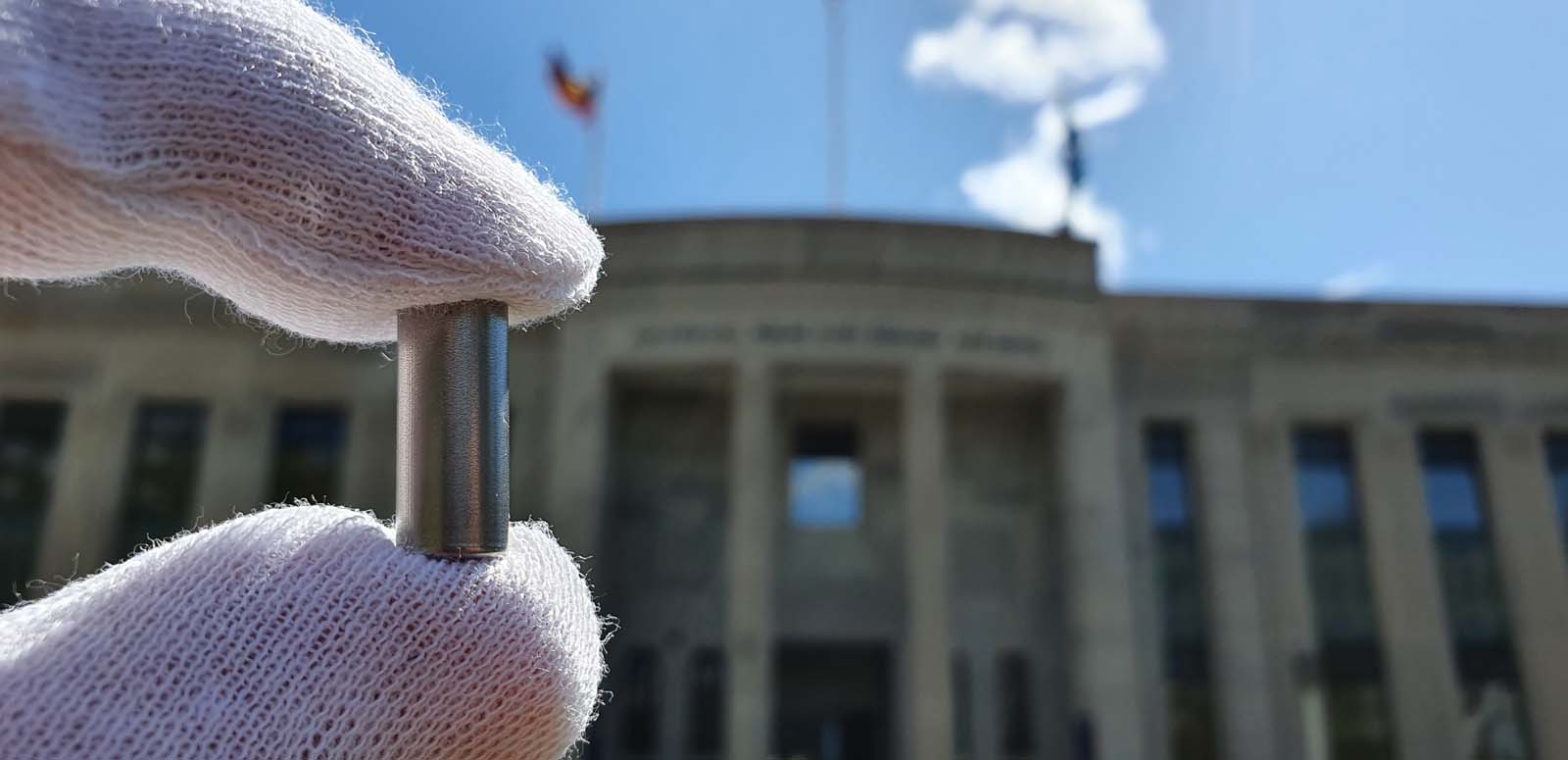
DNA vial and NFSA building, September 2020.
This doesn't mean that we'll start storing the entire NFSA collection on DNA just yet. It is a pilot project to test the potential of DNA data storage technology.
We are not alone in this. Renowned institutions such as Switzerland’s EFPFL (Federal Institute of Technology Lausanne) and media giants such as Netflix are also trialling synthetic DNA. We expect that this technology will eventually become widespread, lowering costs and making it a viable solution for massive volumes of data. However, we will also keep our eyes open to other emerging technologies being developed now and into the future. After all, innovation is a never-ending process!
CATHY FREEMAN'S GOLDEN MOMENT
Cathy Freeman’s triumph at the Sydney 2000 Olympics was a key moment in Australian sporting history. It brought Australians of all ages and backgrounds together in celebration, and it was viewed by billions of people around the world. A recent documentary about her has been seen by thousands, and social media has been flooded by comments about the impact of Cathy Freeman as a role model and inspiration, particularly for Aboriginal and Torres Strait Islander people.
That is why we identified the 400 metre race as a metaphorical part of Australia’s DNA, ideal for preservation in actual DNA and to become Australia’s first use of this new technology. It should never be forgotten – and now, thanks to synthetic DNA, it will be available for millennia to come.
Let's relive the moment with this news report from Seven News:
Cathy Freeman wins gold, 7 News, 26 September 2000. NFSA title: 520865.
The National Film and Sound Archive of Australia acknowledges Australia’s Aboriginal and Torres Strait Islander peoples as the Traditional Custodians of the land on which we work and live and gives respect to their Elders both past and present.
